- What Is Electric Muscle Stimulation?
- The Difference Between TENS and NMES
- How TENS Helps to Reduce Pain
- How NMES Helps You Recover Quicker
- How NMES Improves Strength and Conditioning
- Injury Prevention
- PowerDot 2.0 Smart Muscle Stimulator Review
- How PowerDot Has Helped Us Recover Quicker
- EMS vs. Percussion Therapy
- Who Is PowerDot For?
- Final Verdict
PowerDot is an electrical muscle stimulator (EMS) that can help you relieve pain, speed up muscle recovery and improve athletic performance.
My wife and I have been using PowerDot’s smart muscle stimulation as part of our CrossFit routine for the past few weeks, and I’m excited to share what we’ve learned in this review.
Update: Therabody, the maker of the popular percussion massage device Theragun, announced that it has acquired PowerDot.
What Is Electric Muscle Stimulation?
Electric muscle stimulation, or EMS, means sending electric pulses through your skin to your muscle fibers and nerve endings. This temporarily blocks pain signals, improves recovery and strengthens the targeted muscle group by recruiting muscle fibers.
EMS is not new technology. I remember my physical therapist using it when I was a professional athlete in my early 20s. However, the devices back then were clunky and incredibly expensive. As a result, only doctors and therapists had them.
In general, there are two types of EMS devices on the market:
- Transcutaneous electrical nerve stimulation (TENS)
- Neuromuscular electrical stimulation (NMES)
What’s the Difference Between TENS and NMES?
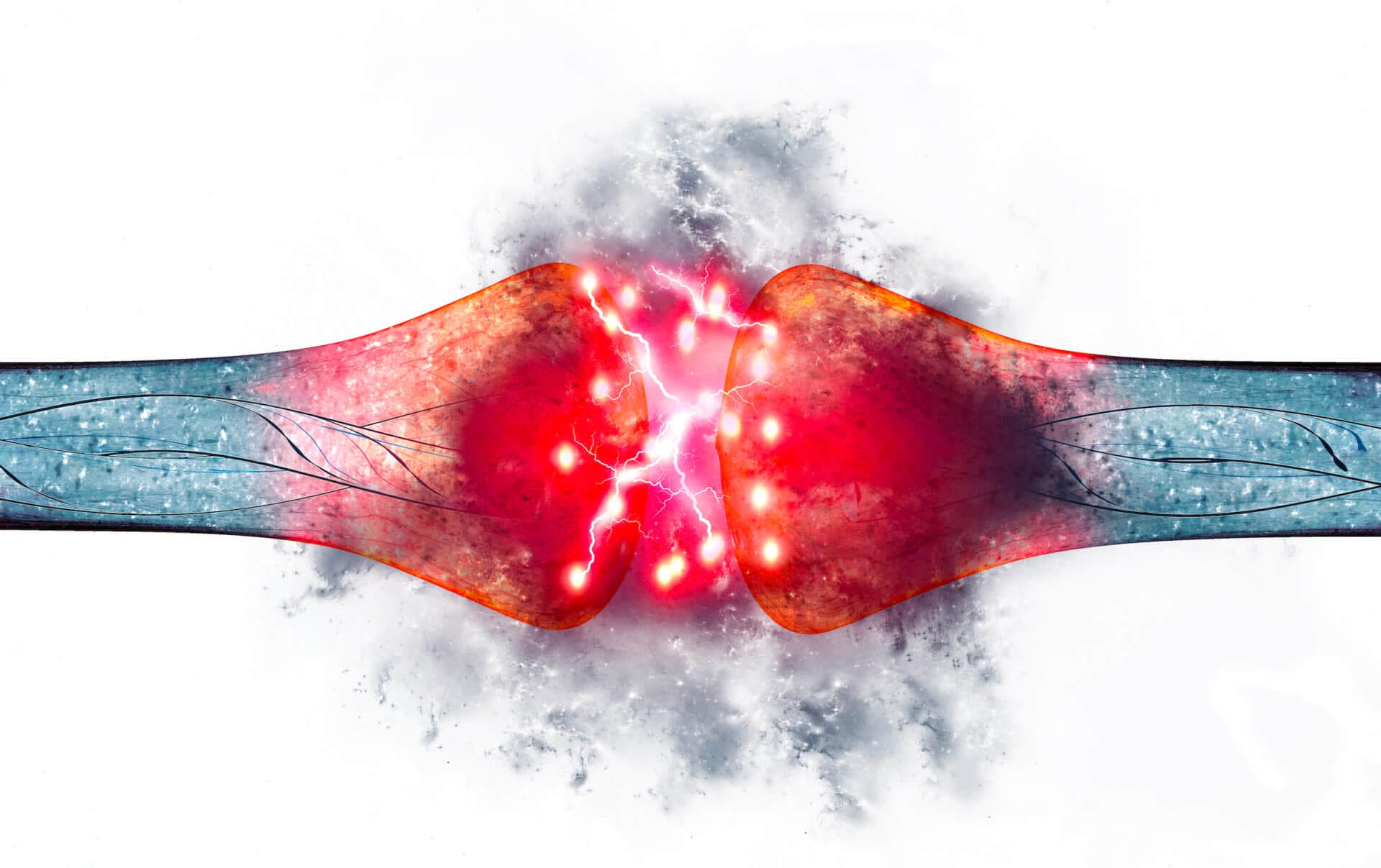
While both technologies use electricity for stimulation, there are some essential differences between them.
In a nutshell, TENS is typically used to temporarily block the pain caused by injury or overtraining. It works by sending electrical pulses through the skin and along the nerve fibers. Doing so distracts the brain from the pain signals the nerves are sending.
It’s the same principle as if you were to pinch your finger and then immediately bang your shin hard against a table. Once the pain signal from the shin is sent to your brain, you won’t feel your finger anymore — at least for a moment. That’s because your mind gets distracted by the stronger pain signal coming from your shin.
TENS does the same thing but without inflicting additional pain!
From a technological perspective, TENS isn’t incredibly sophisticated and you can find dozens of inexpensive units on the market. However, most of those low-cost devices have not received FDA clearance, which means it’s unclear how effective they are at reducing pain.
NMES sends electrical signals at higher frequencies (hertz), a requirement to stimulate both Type 1 and Type 2 muscle fibers — sometimes referred to as slow-twitch and fast-twitch fibers. The former are usually developed through endurance training, while the latter are developed through strength training.
Stimulating muscle fibers using NMES can help build strength and endurance as well as speed up recovery and reduce the risk of muscular injury.
How TENS Helps to Reduce Pain
As indicated above, pain reduction works by distracting the brain from the pain signal the nerves of the affected area are sending.
The scientific rationale behind this is the Gate Control Theory of Pain, which postulates that a non-painful stimulus closes the “gates” (located in your spinal cord) to the central nervous system, thus preventing you from feeling any pain. Additionally, it stimulates the brain to release endorphins that mitigate pain.
Interestingly enough, psychological factors — such as thoughts, emotions and expectations — can also influence the perception of pain.
Right before publishing this review, I offered PowerDot to my good friend and workout buddy Bryan, who injured his patellar tendon doing box jumps. He was limping at the gym because every step was incredibly painful. That same evening, he sent me the following message:
Mike,
I just finished a 30-minute session on my knee. I put the intensity up to near 22, which I certainly felt the pressure on my patellar tendon with the pulsing. I was able to stand up with little to no weakness and absolutely no pain!!
I’m not kidding!!!! This thing is incredible!!!
Bryan M.
Needless to say, I was thrilled to hear how successful the PowerDot treatment was for Bryan!
As you might have guessed, TENS doesn’t cure injuries and the pain relief is only temporary. Based on scientific studies, the analgesic effects of TENS last anywhere from a few minutes to several hours.
How NMES Helps You Recover Quicker
The higher frequencies of NMES, compared to TENS, cause muscle contractions that lead to an increase in oxygenated blood flow. As a result, your body can more efficiently deliver oxygen and nutrients to the affected muscle fibers.
That’s why I usually go to the gym to perform low-intensity workouts (to get some blood flowing), even on my rest days or when I feel super sore. That can also help speed up recovery and certainly beats sitting around all day.
How NMES Improves Strength and Conditioning
The idea behind using NMES to improve strength and conditioning is to recruit as many muscle fibers of the target area as possible by making them contract to the frequency of the NMES device.
In scientific literature, that’s sometimes referred to as electrostimulation strength training (EST). What’s fascinating is that EST increases the force of a maximal voluntary contraction (MVC) through neural adaptations and without causing significant muscle hypertrophy.
In other words, NMES makes your muscles stronger without causing them to grow, by influencing motor-sensory areas in your brain.
What’s more, those findings seem to apply to both athletes and non-athletes. So regardless of how fit you are, NMES can make your muscles stronger and improve their conditioning.
That said, don’t look at NMES as a replacement for regular exercise but rather as a companion tool that can help you achieve your fitness goals faster.
To put the above statements into some context, here are the results of a few studies that show how EMS improved athletic performance:
- 14% squat jump increase and 17% countermovement jump increase in basketball players
- Maximum voluntary contraction increase by 20% for quads, 21% squat jump increase in volleyball players
- Up to 37.1% eccentric torque increase, up to 49.2% concentric torque increase in ice hockey players
Injury Prevention
Injuries such as muscle strains and tears can happen for several reasons, including fatigue, overuse, overextension, poor form and others.
To prevent injuries, athletes usually warm up and perform dynamic stretching exercises before workouts to increase blood flow and to activate their muscle fibers.
EMS can significantly reduce the risk of injury in two ways:
- Using it as a recovery tool, you can reduce muscle fatigue before going into your next workout.
- As part of your warmup routine, EMS can increase oxygenated blood flow by recruiting more muscle fibers than traditional warm-up routines.
PowerDot 2.0 Smart Muscle Stimulator Review
PowerDot is an FDA-cleared NMES and TENS device that my wife and I have been using extensively over the past few weeks. In total, we’ve enjoyed over 14 hours of electric muscle stimulation to relieve exercise-induced pain and to speed up our recovery after intense CrossFit workouts.
What’s in the Package
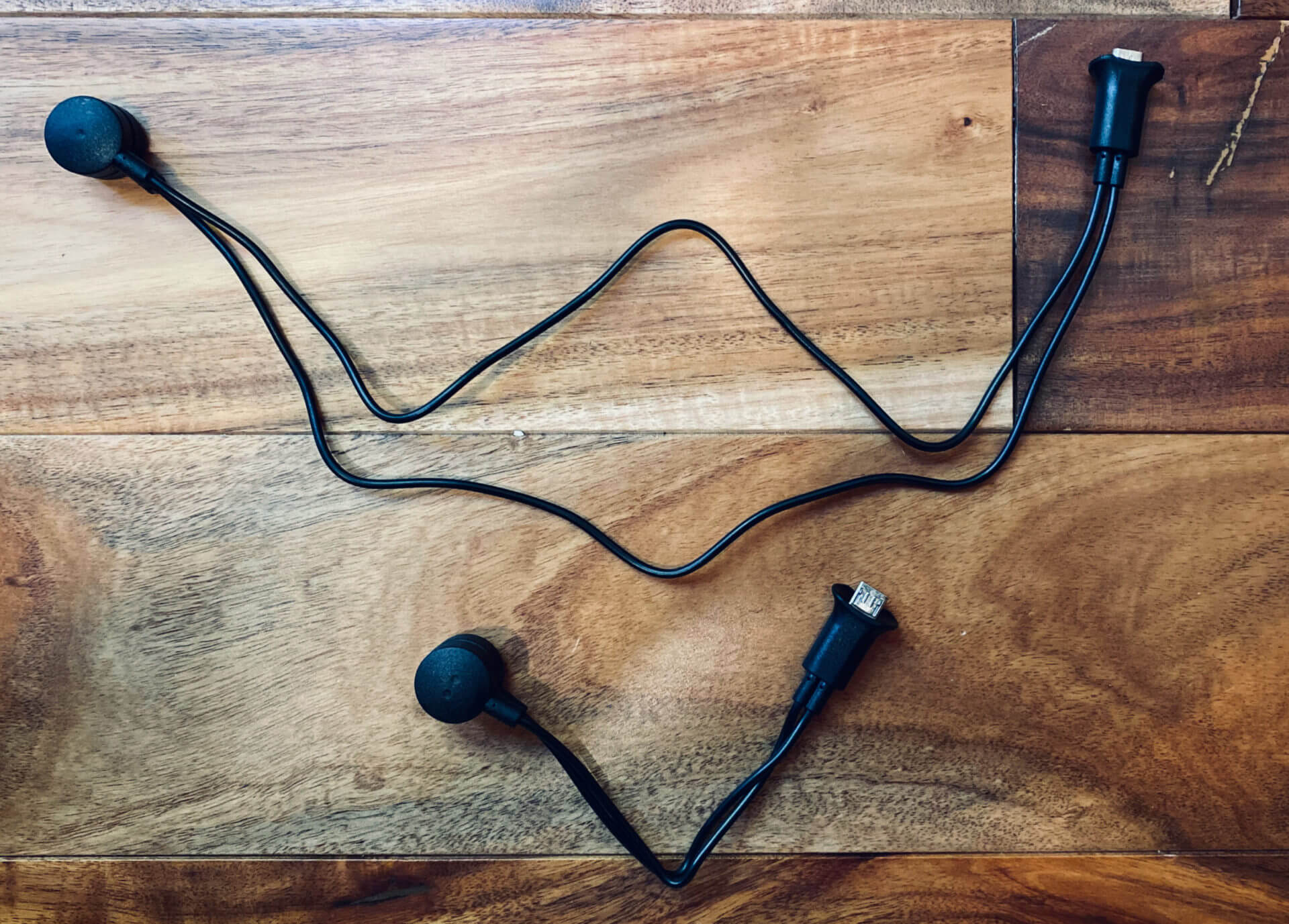
We have the PowerDot 2.0 Duo, which includes two pods instead of one. That allows us to use it on both legs at the same time.
In addition to the Bluetooth-enabled pods, the set also includes six electrode pads, cables to connect the pods to the pads, a USB charging cable and a carrying case.
The electrode pads are reusable and last for approximately 25 sessions before you have to replace them.
To control the hardware, PowerDot offers a feature-rich smartphone app that’s available for iOS and Android.
NMES and TENS Programs
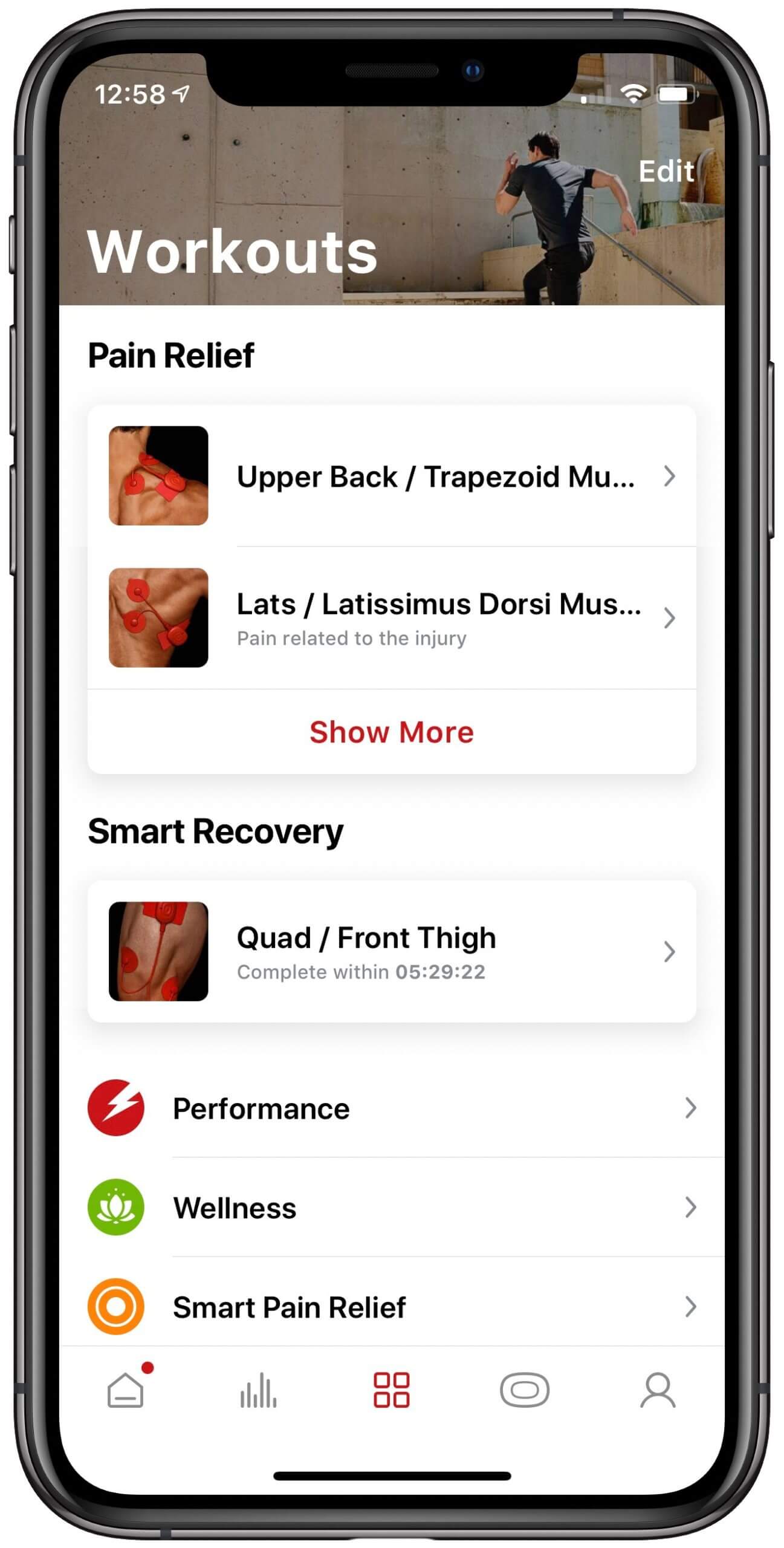
PowerDot currently offers 12 programs via its mobile app, which are split into four categories:
- Performance: Improve muscle endurance, strength endurance, resistance, strength, and explosive strength.
- Wellness: Think of it as a massage session to get rid of knots and muscle tension.
- Smart Pain Relief: Using TENS, PowerDot can block the pain signal from reaching your brain, thus providing instant relief.
- Smart Recovery: Avoid training fatigue and relieve muscle and joint soreness.
Additionally, you can focus on specific muscles or body parts and then select a goal from the following choices:
- Active recovery
- Explosive strength
- Extended recovery
- Light recovery
- Massage
- Resistance
- Strength
- Warm-up/potentiation
So as you can see, the PowerDot programs are presented in a sort of matrix that makes it easy to quickly find the right type of program for the area of your body that you’d like to treat.
How to Use PowerDot
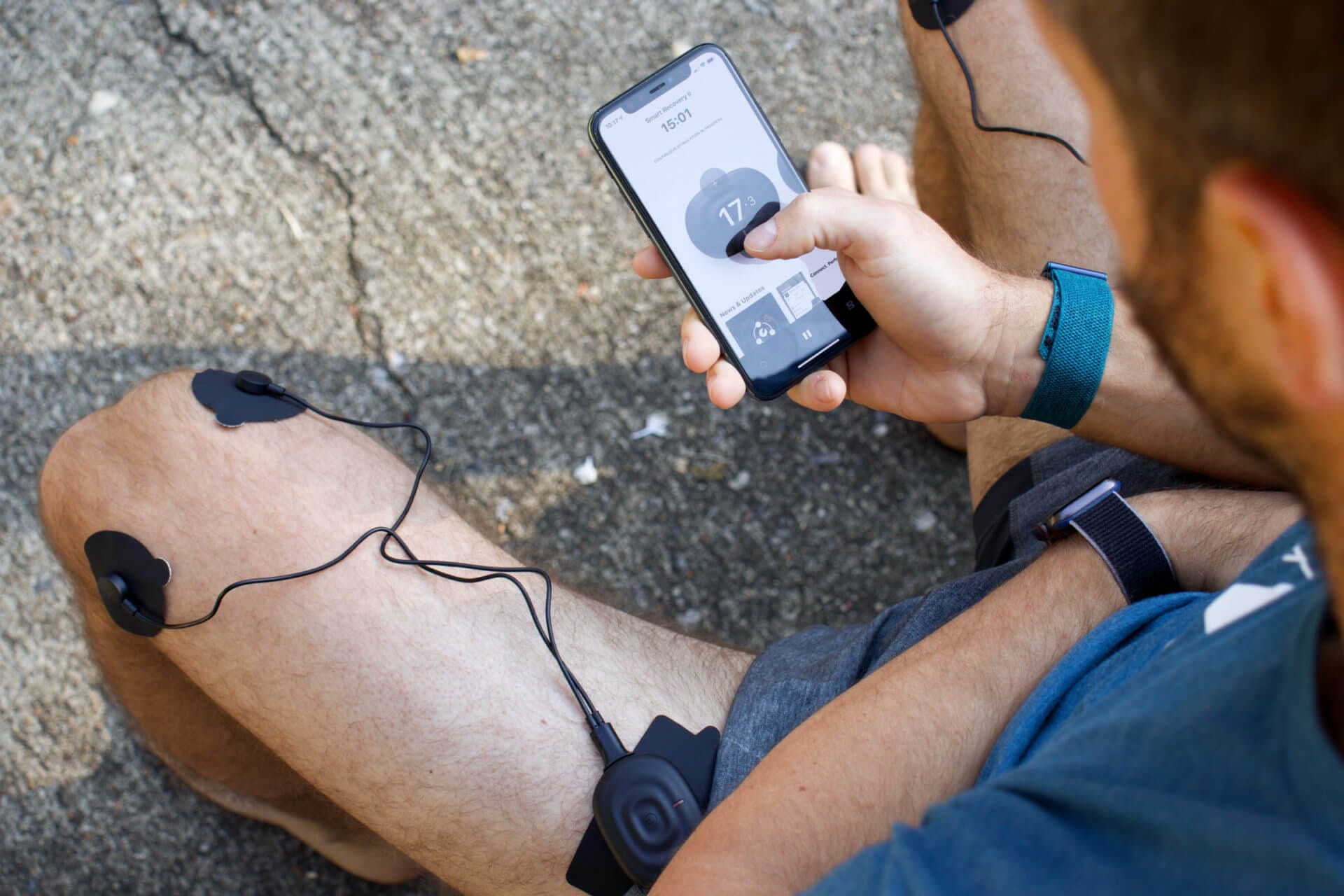
Using PowerDot is as easy as attaching the self-adhesive electrode pads to your skin over the muscle group you want to treat, attaching the cables, and selecting one of the programs I mentioned above.
In case you’re wondering, the underside of the pads is sticky enough to keep them in place, but not so sticky as to make them painful to peel off. My legs are pretty hairy and I was afraid I would give myself a Brazilian wax every time I removed them, but that turned out to be an unfounded fear.
Depending on the program you choose, you can select its length or provide input about your perceived pain level before and after the program has completed.
While the program is running, you can use the PowerDot app to increase or decrease the strength of the electric stimulation on a scale from 0 to 100. Of course, you can also stop, pause and resume the program at any time.
PowerDot recommends sitting still or resting while performing the treatment for two reasons:
- Depending on the type of program you’re using, relaxed muscles often respond better to the electrical stimulus.
- You might experience involuntary muscle twitching. For example, while treating my forearm and wrist, the muscles attached to my fingers would twitch (like I was making a fist), preventing me from typing on my keyboard. While that was fun to experience, imagine what could have happened if I was trying to operate heavy machinery or use scissors.
I’ve made it a point to use PowerDot while sitting relaxed in front of the computer or on the couch (depending on the areas I want to treat).
Using One vs. Two Pods
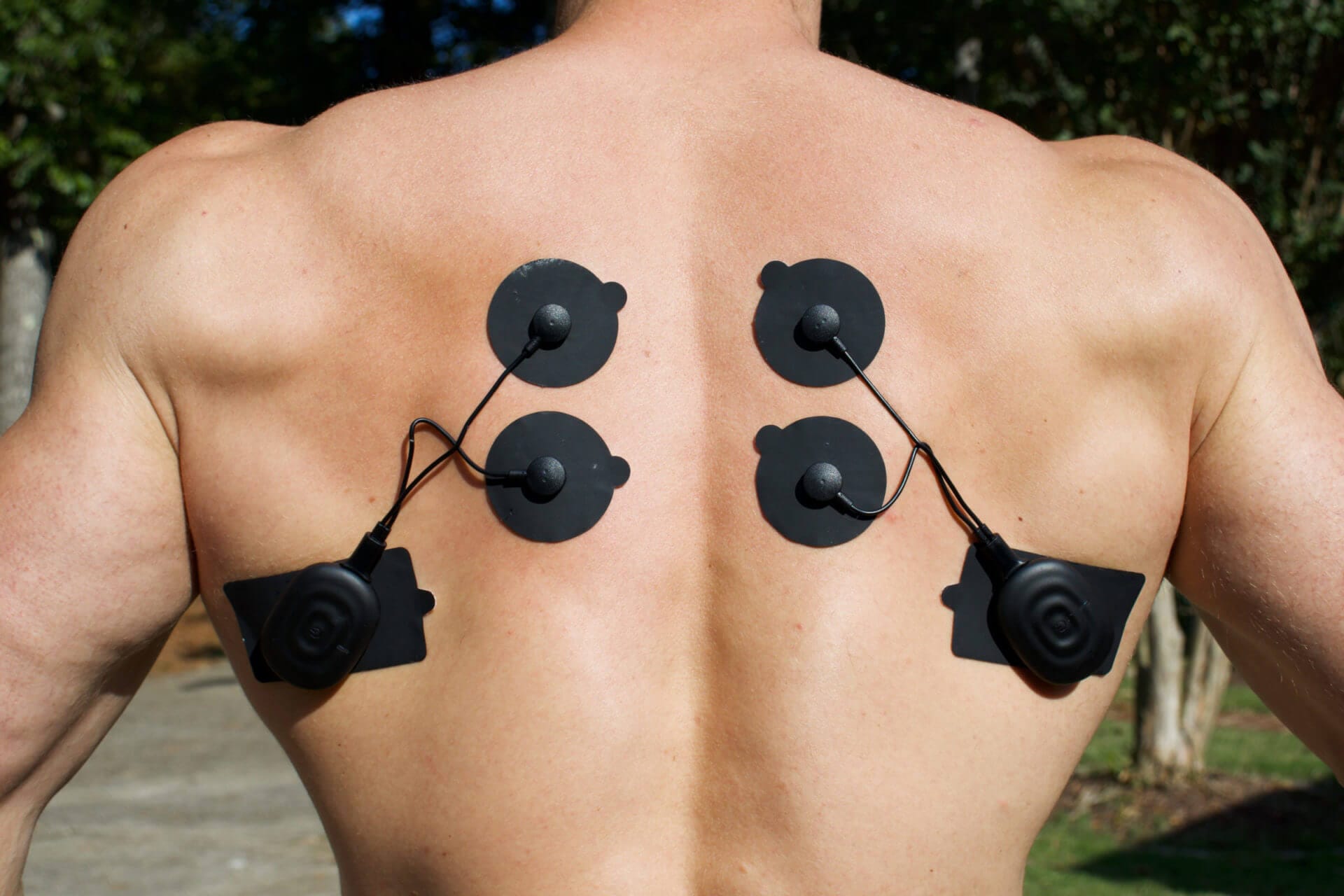
As I mentioned above, we got the PowerDot Duo, which includes two pods. But that doesn’t mean we have to use both at the same time. You can use one or both pods, depending on what program you select or what body part you want to treat.
In most cases, the mobile app automatically suggests proceeding with only one pod if you haven’t connected the second one.
If you use only one pod most of the time, I recommend charging it separately to maintain somewhat even battery levels. That’s because if one pod is fully charged, but the other one is almost out of battery, you might notice a discrepancy in the strength of the stimulus they provide.
While that’s not a huge problem (you can always adjust the level of electric stimulation for each pod separately), I prefer keeping them in sync as much as possible.
Battery Life
The pods’ batteries last for approximately six hours of continuous use, and you can conveniently recharge them using the included micro-USB cable.
I recharge the pods every couple of days by plugging them into the USB port of my iMac Pro, and I haven’t felt like the battery life is a limitation or annoyance.
What’s nice about PowerDot is that the company includes a charging cable that has a single USB Type-A connector on one side and two micro-USB connectors on the other. That means you only need one USB port (and cable) to charge both pods simultaneously.
Replacement Pads
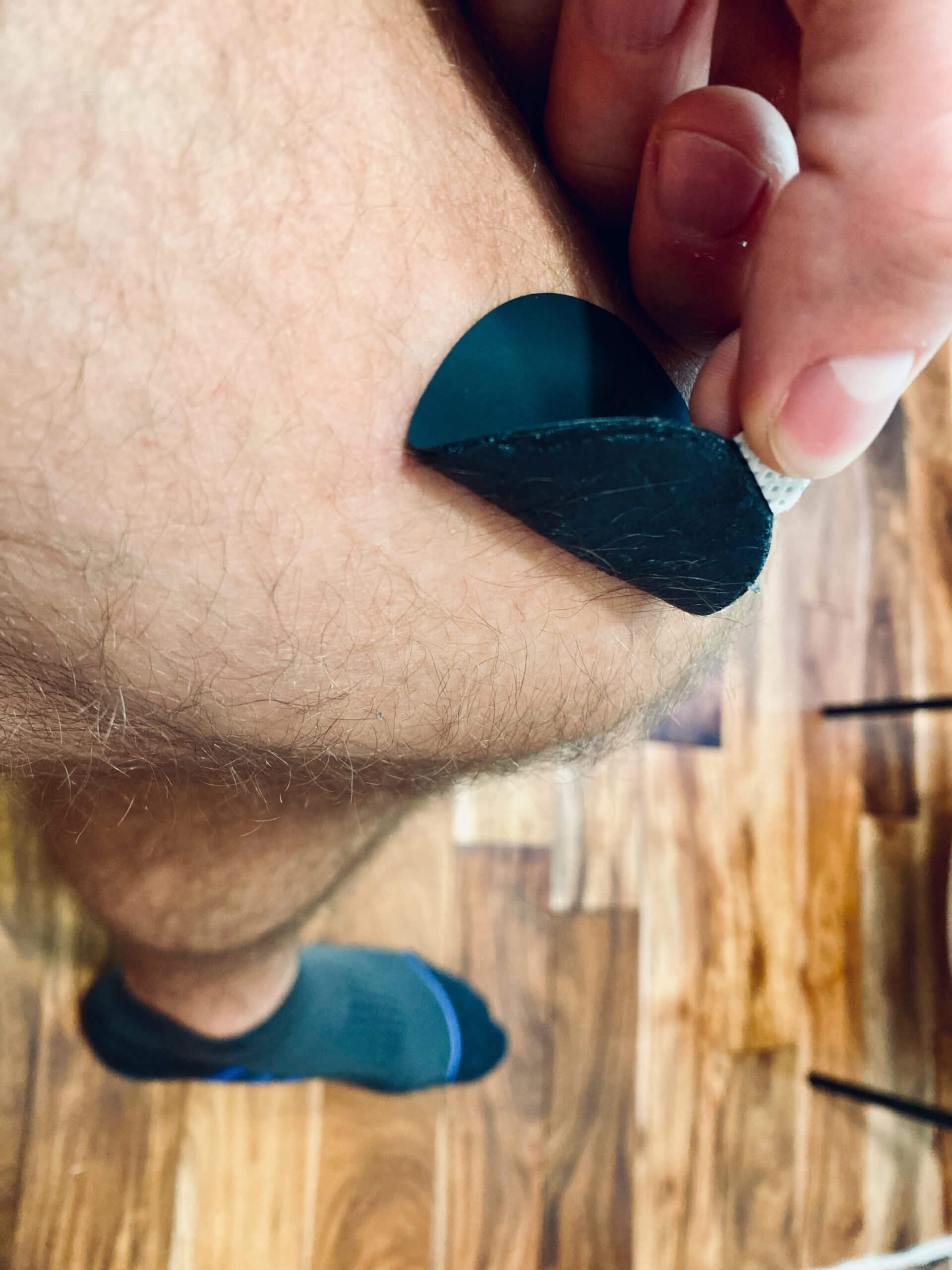
The pads come with a sticky side that wears out over time. As a result, you’ll have to replace them every 25 sessions or so.
The good news is there are a few things you can do to extend the lifespan of your pads. For example, you can wipe them regularly with rubbing alcohol, and always put them back onto the plastic square they came with after each use.
I also recommend cleaning your skin before using them, especially if you’re sweaty or wearing lotion.
When the pads no longer stick to your skin, it’s time to replace them. The PowerDot app will notify and remind you as well, so you won’t forget. We just ordered two packs of replacement pads after having used the ones that came with our review unit for 30 sessions.
Pricing
PowerDot 2.0 is available from powerdot.com in two configurations, including the PowerDot UNO and the PowerDot DUO. As the product names imply, the UNO comes with only a single pod and costs $199 while the DUO includes two and costs $349.
It is possible to start with the UNO and add another one at a later date, but you’ll end up paying $50 more than if you had purchased the DUO from the get-go.
Unfortunately, my discount code (MK20) expired when Therabody acquired PowerDot in May of 2020. However, you can still use my affiliate link (see button above) if you’d like to support this blog.
Replacement pads cost $18, regardless of what type or version you choose.
How PowerDot Has Helped Us Recover Quicker
I have to admit that we’ve just scratched the surface of what PowerDot can do. What I mean by that is that we have focused predominantly on smart pain relief.
Both my wife and I agree that PowerDot is an effective tool for temporarily relieving pain. Besides making us feel better, the device’s smart pain relief programs also help us to better focus on other therapeutic interventions (i.e., stretching) that address the root cause of the pain.
Over the past week or so, I’ve started using PowerDot to support my recovery after super-intense CrossFit sessions.
AMRAP stands for “as many reps and rounds as possible.”
For example, the other day we did a workout including back squats during the strength portion and an AMRAP of four sets every 3½ minutes consisting of:
- 400-meter run
- Max back squats @ 115 pounds
I did a total of 131 back squats as part of that AMRAP and wasn’t sore the next day (unlike everyone else in the gym). I attribute that in part to using PowerDot after the workout to flush out lactic acid and to ensure any torn muscle tissue got enough nutrients and oxygenated blood to quickly repair the damage inflicted by the exercise.
While using PowerDot as a recovery tool, I’ve experienced less muscle fatigue and I’ve been feeling subjectively less sore than my workout buddies (who’ve been doing the same workouts).
What I like best about all of this is that I barely have to invest any extra time in this recovery regimen. It takes less than five minutes to put on the pads and start the program via the smartphone app.
EMS vs. Percussion Therapy
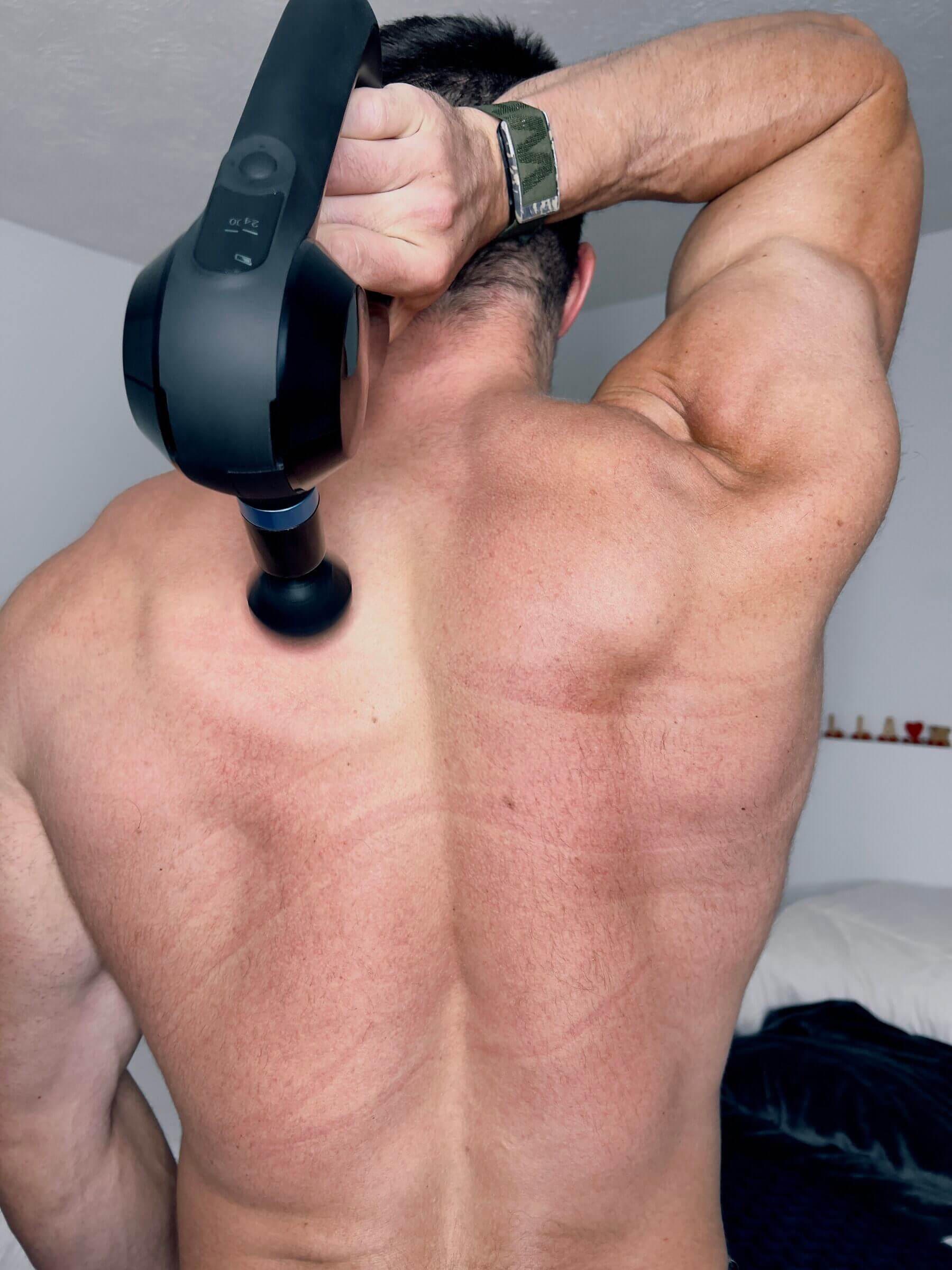
If you’ve been following my blog, you might remember from a previous review that we also own a percussion massage tool. So you might be wondering if we’re still using it.
The good news is that we are still using our Thereagun — just less frequently!
While I think both types of devices can effectively improve recovery and assist muscles in getting ready for an intense workout, I prefer EMS because it doesn’t take much effort on my part.
In other words, I don’t have to exert any energy by pressing a massage gun against my body. With EMS, my hands remain free and I can either relax on the couch or do something else.
Plus, EMS covers additional use cases, such as improving strength and conditioning and pain relief.
That said, both my wife and I still occasionally use our massage gun to work on “knots,” or if we just feel the desire to get punched repeatedly.
Who Is PowerDot For?
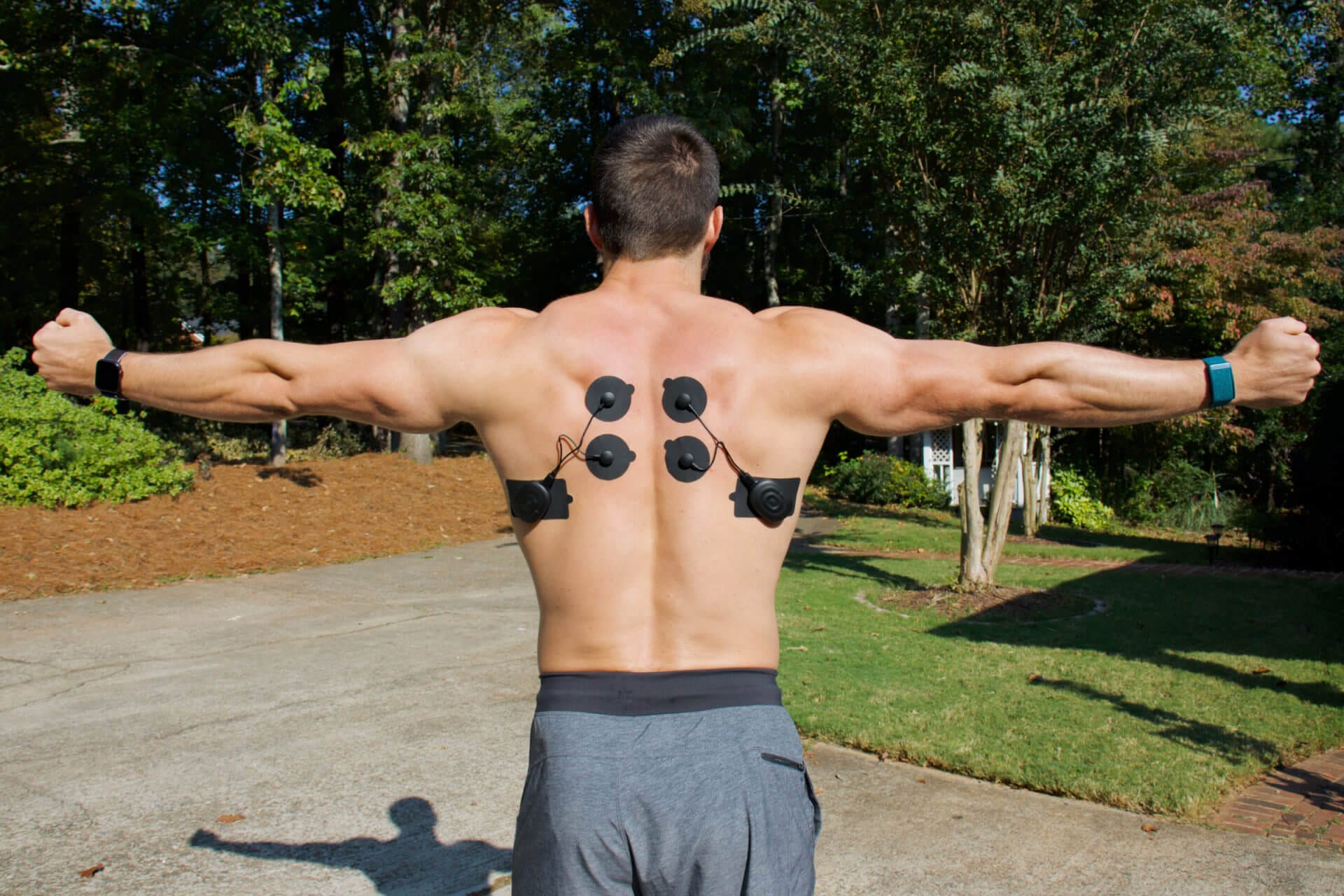
After reading about all the benefits of EMS and the PowerDot, you might be wondering if you should jump onto the EMS bandwagon.
As with most of the products and services I review on this blog, the depends on your individual use cases and requirements.
I strongly believe that PowerDot can be beneficial for many people, but it won’t have the same return on investment for everyone.
If you fall into one of the following categories, or have similar use cases, you should definitely consider getting PowerDot:
- Professional athletes: If your career, life or income depends on your physical performance, getting PowerDot is a no-brainer. It’s scientifically proven to reduce pain, and to improve recovery, strength and conditioning — all factors that you can directly benefit from.
- Serious fitness enthusiasts: If you’re like me and you take working out more seriously than most other people — and you hate the days where you can’t work out (whatever the reason might be) — then PowderDot is a great tool that you’ll enjoy using to support your fitness goals.
- Chronic pain: If you suffer from chronic pain, such as lower back pain, and you haven’t found a good way to relieve that pain, then an electric muscle stimulator should be worth your consideration. Not only can PowerDot temporarily block the pain signal from reaching your brain (and thus give you some relief), it can also assist with recovery interventions and strength training to fix the underlying issue.
- If you like massages or percussion therapy: If you like being touched and the pain that you sometimes feel when getting a massage, then you’ll probably love the sensation of muscle twitching. I really enjoy that feeling and my tolerance for electric stimulation has definitely increased since I started using PowerDot.
There are probably other personas and use cases that EMS and PowerDot would be a great fit for that I can’t think of right now. If anything else pops into my head, I’ll make sure to add it to the list.
When You Shouldn’t Use PowerDot
As far as pain relief is concerned, PowerDot is not meant to permanently fix the underlying issue that causes pain. So don’t buy PowerDot and then stop your physical therapy or medical intervention.
The same holds true for improving strength and conditioning. Don’t stop working out because you use PowerDot three times per week while sitting on the couch. Much like you shouldn’t think of vitamin supplements as a replacement for a healthy diet, NMES isn’t a replacement for lifting heavy objects, breaking a sweat and “stressing” your cardiovascular system.
Final Verdict
Both my wife and I have become fans of electric muscle stimulation because we truly enjoy how it feels and we’ve experienced the improvements in recovery time, blood circulation and pain relief.
In other words, PowerDot has become a valuable tool in our fitness routine that has made our workouts more effective while reducing our downtime.
As a next step, I’m looking forward to using PowerDot to increase muscle strength and conditioning, especially in the areas that I consider my weaknesses, including my triceps.
I’ll make sure to update this review in a couple of weeks with anything new I’ve learned, so check back from time to time, if you like.

Michael Kummer is a healthy living enthusiast and CrossFit athlete whose goal is to help people achieve optimal health by bridging the gap between ancestral living and the demands of modern society.
Medical Disclaimer
The information shared on this blog is for educational purposes only, is not a substitute for the advice of medical doctors or registered dieticians (which we are not) and should not be used to prevent, diagnose, or treat any condition. Consult with a physician before starting a fitness regimen, adding supplements to your diet, or making other changes that may affect your medications, treatment plan or overall health. MichaelKummer.com and its owner MK Media Group, LLC are not liable for how you use and implement the information shared here, which is based on the opinions of the authors formed after engaging in personal use and research. We recommend products, services, or programs and are sometimes compensated for doing so as affiliates. Please read our Terms and Conditions for further information, including our privacy policy.
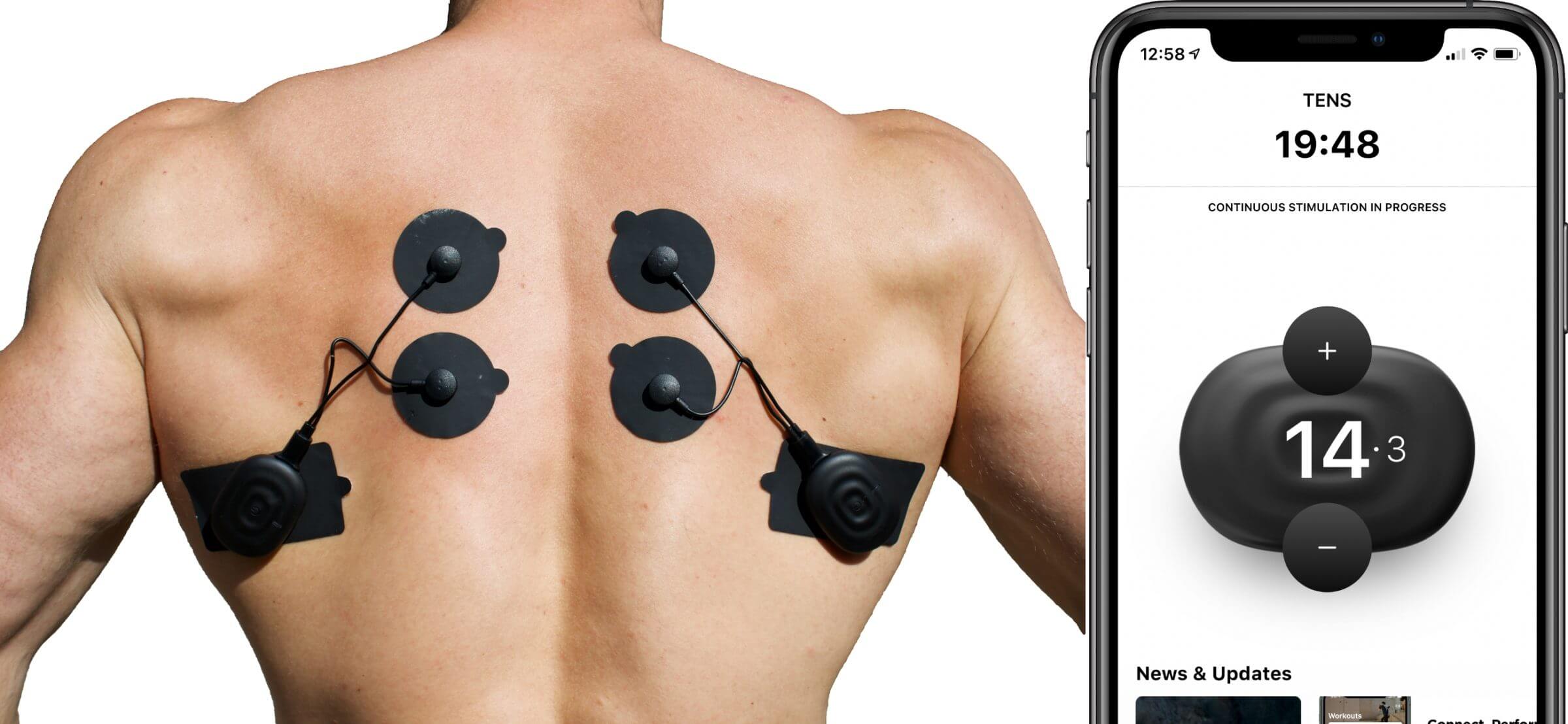

Be aware that Therabody has no PowerDot 2.0 replacement pads available literally anywhere in North America, and as of 11June2024 is not able togive their own agents, let alone consumers an idea of when these may return to shelves. If you are considering buying this product, ensure that replacemnt pads are indeed available.
Cheers,
/paul
Thanks for letting me know! I’m running low on pads and was about to place an order when I saw your comment!
Question for you: have you had issues with the bluetooth connectivity? I just got a powerdot duo 2.0 and when I put the electrodes on my back and hold my phone in front of my body, it loses connection right away. Seems strange that the bluetooth connection is so weak. Ever happen to you? Thanks for great article… read it before purchasing! Cheers, Barry
Hey Barry,
No, I haven’t had any issues with BT connectivity. Might be worthwhile reaching out to Therabody. Maybe your unit is defective…
Cheers,
Michael
Hi
Any update for the strenghning side of the PowerDot?
Hi Mossi,
I used PowerDot on my triceps for a while but then got distracted and never followed through :)
So, unfortunately, I still don’t have a definitive answer whether or not PowerDot can help strengthen muscles and to what extent.
Cheers,
Michael
Great article!
Very informative regarding muscle stimulators. I personally use a muscle stimulator. I like to use it after my workout. It helps boost muscle recovery and prevents injury.
Stay safe and healthy!
Cheers!